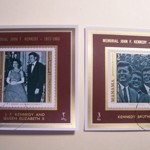FREE: 1894 1¢ Franklin, blue unwatermarked - US Scott # 247

A member of Listia gave this away for free!
Do you want FREE stuff like this?
Listia is 100% Free to use
Over 100,000 items are FREE on Listia
Declutter your home & save money

"Listia is like EBay, except everything is free" - Los Angeles Times

"An Awesome Way To Give And Get Free Stuff" - Michael Arrington, TechCrunch
This Stuff is Free Too:

FREE

FREE

FREE

FREE

FREE
The listing, 1894 1¢ Franklin, blue unwatermarked - US Scott # 247 has ended.
U.S. #2471894 1¢ Franklin
Issued: 1894 (exact date uncertain)
Issue Quantity: 336,806,920 (estimate)
Color: Blue
Perforation: 12
Watermark: None
In late 1894 or early 1895, officials decided the ultramarine ink used for the 1¢ Franklin stamp (U.S. #246) was unsatisfactory. The color was changed to a deeper blue, creating U.S. #247.
With the issue of the 1894 series, the United States Bureau of Engraving and Printing (BEP) began printing postage stamps for the first time. Until this date, contracts had been awarded to private companies for the production of stamps.
The BEP was established in 1862, following the outbreak of the Civil War. When the firing on Fort Sumter began, the nation was already on the verge of bankruptcy and was in no position to finance a war. This matter, along with other war issues, prompted President Lincoln to call a special session of Congress. During this session, Secretary of the Treasury Salmon P. Chase suggested issuing non-interest bearing notes that would circulate as money and a system of domestic taxation.
Congress adopted the Chase plan, and as a result the first government-issued paper money came into existence. The notes were printed by the New York Bank Note companies and were then signed by the Treasurer of the United States and the Registrar of the Treasury. This procedure was soon found to be impractical. The designated officers had no time to do much else than sign their names on the notes! Therefore, it was decided that the notes should be imprinted with copies of the required officers’ signatures, as well as the Treasury seal. In addition, it was decided that this printing would be done in the Treasury building. The necessary machines for imprinting were obtained, and on August 29, 1862, the Bureau began its work, which would later lead to the printing of postage stamps.
1894 1¢ Franklin, blue unwatermarked - US Scott # 247 is in the Collectibles | Stamps category

